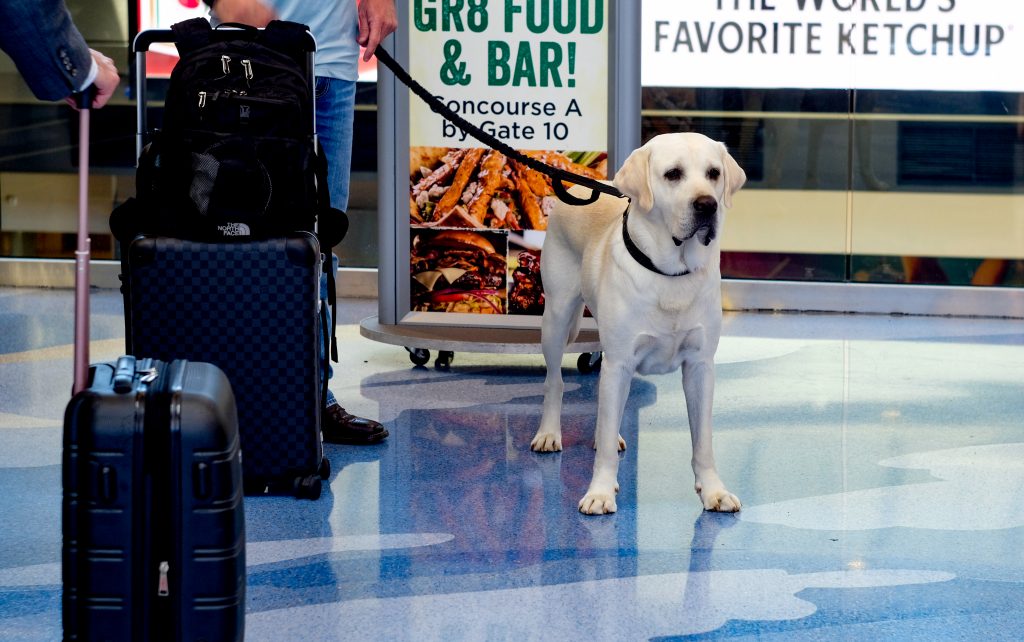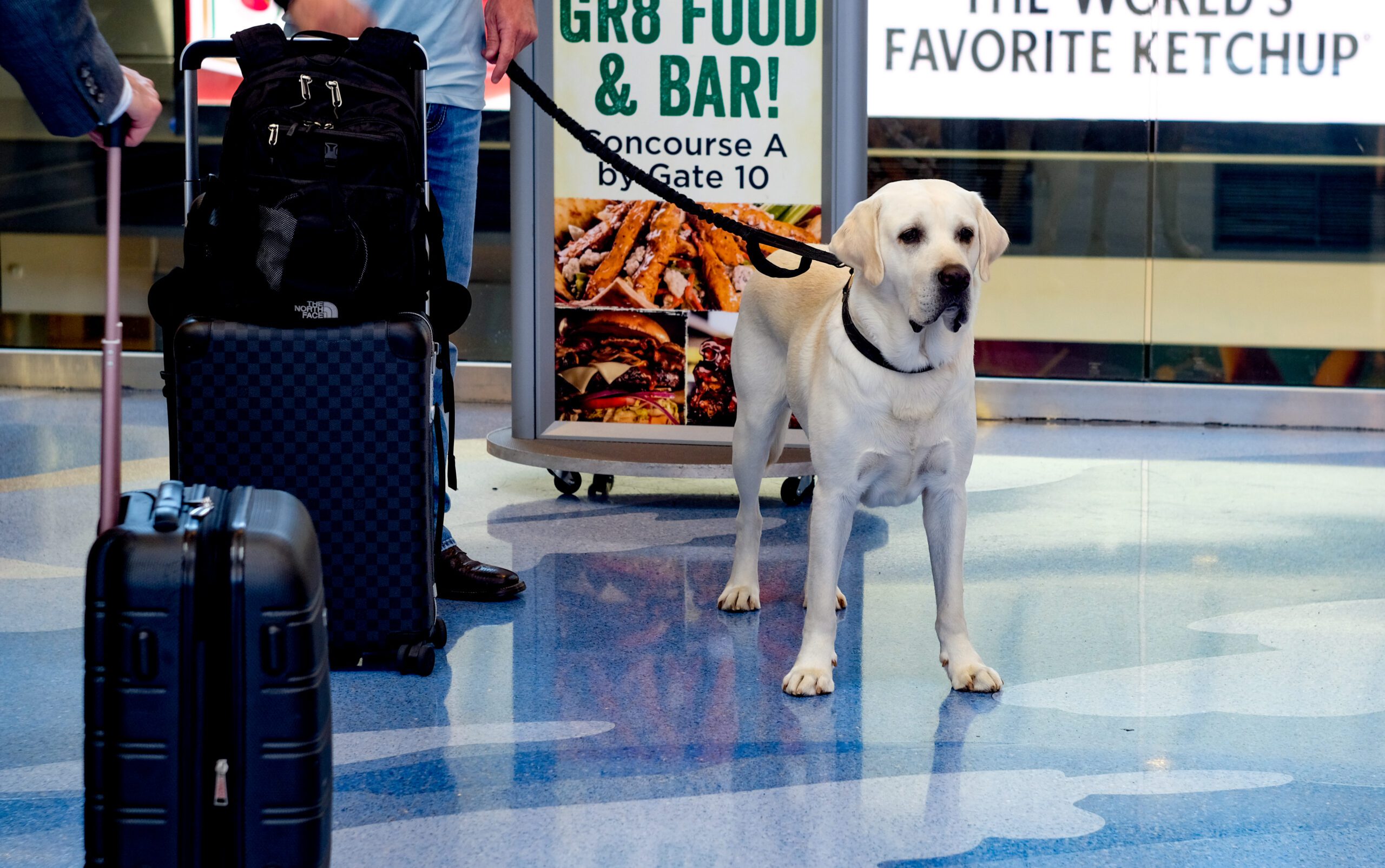No More Snakes on a Plane, and Peacocks Are Out, Too
As the number of pets on planes grows, airlines are setting limits on what qualifies as an emotional support animal
By April Johnsto
Published November 26, 2018
Read Time: 4 mins
In January, a Brooklyn-based performance artist and her emotional support peacock attempted to board a United Airlines flight from Newark to Los Angeles.
It didn’t fly.
Dexter — that’s the peacock — was deemed unfit for air travel. He didn’t meet United’s height, weight or safety requirements.
But the incident — and the viral video of Dexter riding through the terminal on his owner’s shoulder — did touch off a debate about the wisdom of allowing emotional support animals, or ESAs, on airplanes.
Last year, the number of ESAs on flights grew by more than 50 percent nationally and a whopping 75 percent on United, according to the trade group Airlines for America and United, respectively. Dexter’s situation wasn’t the only high-profile incident. Emotional support dogs attacked a passenger on a Delta flight and bit a child on a Southwest flight.
And Frontier Airlines recently escorted a woman off a plane in Orlando … with her emotional support squirrel.
“The incidents encouraged us to take another look at our policy,” United spokesman Charlie Hobart said. “We have to ensure the overall safety of everyone on board.”
Other major airlines have followed suit, tightening restrictions on ESAs. Most carriers now require a note from a mental health professional and proof of animal health and vaccination at least 48 hours prior to traveling. Airlines also have growing lists of animals prohibited from flying, including rodents and reptiles.
Service animals, which are distinctly different from ESAs, are still permitted to fly without prior notification. Typically dogs or miniature horses, service animals are specially trained to perform specific tasks for the benefit of those with disabilities and are protected by the Americans with Disabilities Act.
ESAs require no such training and have no national certification process. They are not recognized as service animals under federal law.
The restrictions have irked some ESA owners, who say they need their animals’ support to get through an anxiety-inducing activity like flying, and pet-loving bystanders, who don’t see any problem with animals taking to the air.
Some studies have shown animals can cause short-term, temporary reductions in stress. But other researchers, including Hal Herzog, a professor emeritus at Western Carolina University, say there is little empirical evidence to support the long-term effects of animal interaction on health and even less to support the usefulness of ESAs.
“I’m a pet lover, but I’m also a researcher,” Herzog said. “And the evidence that animals make good therapists is much weaker than people think.”
In addition to a lack of research, Herzog worries that shifting ESA policies are ripe for exploitation.
Typically, those wishing to fly with an ESA visit their medical doctor or mental health professional, receive a qualifying diagnosis and request a letter saying an ESA is part of their treatment plan. But several websites will generate a letter from a real therapist after nothing more than a quick survey and a payment of about $160.
Herzog tried it. Though he has no diagnosis and his “mean little cat has never provided any emotional support,” he was told he was a good candidate for a letter.
“It’s a cottage industry,” he concluded.
While demand for ESA letters and the number of ESAs on planes continues to swell, the aviation industry has struggled to keep up.
The Federal Aviation Administration has declined to set guidelines, leaving the heavy lifting to the airlines, and domestic airports have traditionally been quite lenient with animals. Pittsburgh International, for example, has no restrictions on the type of animal permitted in the terminal, so long as it remains under the owner’s control, in a carrier or on a leash.
“Anything an airline would accept, an airport would accept,” said Brian Stashak , PIT’s vice president of Terminal Operations.
Without federal guidance, airlines have taken the brunt of the backlash, both when policies restrict animals from flying and when flying animals attack passengers.
“You can see how airlines are stuck in a bind,” Herzog said.
And despite the new restrictions, most airlines haven’t seen a reduction in ESAs. At United, the number of animals on board plateaued for a few months, then crept back up. But Hobart says curtailment was never really the point.
“It’s not about reducing the number of animals on board, it’s about making sure those on board don’t pose a risk to our customers,” he said.
Here’s a look at the updated ESA restrictions at five major carriers:
- Now requires passengers to contact the Special Assistance Desk with required documentation — including a letter from a mental health professional — 48 hours prior to travel.
- Prohibits several types of animals, including rodents, reptiles and creatures with horns or tusks.
- Now requires passengers to submit a letter from a mental health professional and two forms — confirmation of training and proof of health and vaccination — 48 hours prior to travel.
- Prohibits several types of animals, including rodents, reptiles and “pit bull type dogs as service or support animals.”
- Now requires passengers to present a current letter from a medical doctor or mental health professional on the day of departure.
- Limits ESAs to cats or dogs.
- Now requires passengers to submit three forms — mental health professional, veterinarian health and passenger liability — at least 48-hours before travel.
- Prohibits several types of animals, including rodents, reptiles and spiders.
- Now requires passengers to submit a letter from a mental health professional and two forms — confirmation of training and proof of health and vaccination — 48 hours prior to travel.
- Prohibits several types of animals, including rodents, reptiles and non-household birds.
Watch
This Next
Read
This Next






